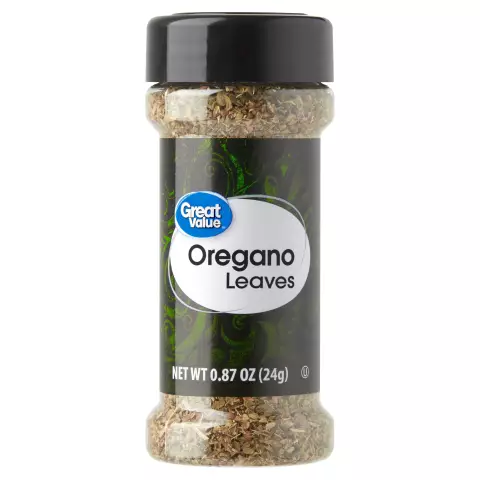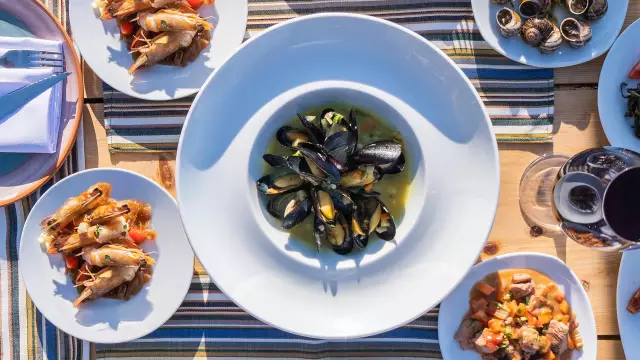- Author Rachel Wainwright [email protected].
- Public 2023-12-15 07:39.
- Last modified 2025-11-02 20:14.
Octopus
Octopuses or octopuses are representatives of the cephalopods of the suborder Incirrina, living in the water column, some of them are found only at great depths. In nature, there are about 200 species of octopuses, some of them are poisonous. Their closest relatives are squid and cuttlefish, and distant relatives are all gastropods and bivalve molluscs.
The ratio of BJU in the product

Source: depositphotos.com How to burn 82 kcal?
| Walking | 21 minutes |
| Jogging | 9 minutes |
| Swimming | 7 minutes |
| A bike | 12 minutes |
| Aerobics | 16 minutes |
| Household chores | 27 minutes |
The saccular body of the octopus is called the mantle, it is soft and short, oval in the back, and in front of it is spliced with a large head, in the upper part of which there are large protruding eyes.
The octopus has 8 long and muscular, sucker-studded tentacles located around a tiny mouth surrounded by two chitinous jaws - the beak needed to grind food. In the throat of the mollusk there is a special grater - a radula, thanks to which the food is ground into gruel, since the octopus cannot swallow large pieces whole.
It is noteworthy that this mollusk has 3 hearts, the first of which drives blue blood throughout its body, and the other two push blood through the gills.
Octopuses have an unusual ability - they can change shape, since there are no bones in their body, and color, thanks to the cells with various pigments contained in its skin, which, under the influence of impulses from the central nervous system, can stretch or shrink. Usually these mollusks are brown in color, but if they are frightened, the color will turn white, if angry, it will turn red.
Earlier, the ink of mollusks was used by mankind for writing, nowadays a light brown dye is obtained from them - sepia, which is used by artists and photographers who make "antique" pictures. Fresh or frozen octopus meat is used for cooking in many countries around the world.
Nutritional value of octopus
100 g of octopus meat contains:
- Protein - 30 g;
- Carbohydrates - 4.4 g;
- Cholesterol - 96 mg;
- Saturated Fat - 0.5 g;
- Monounsaturated fatty acids - 0.3 g;
- Polyunsaturated fatty acids - 0.5 g;
- Sugar - 0 g;
- Lipids 2.1 g;
- Sodium - 460 mg;
- Potassium - 630 mg;
- Dietary fiber - 0 g;
- Retinol - 300 IU;
- Vitamin C - 8 mg;
- Vitamin D - 0 mcg;
- Calcium - 106 mg;
- Iron - 9.5 mg;
- Vitamin B6 - 0.6 mg;
- Vitamin B12 - 36 mcg;
- Magnesium - 60 mg
The calorie content of 100 g of octopus meat is 164 kcal. The meat of this shellfish, when properly cooked, is a rich source of vitamins, proteins and amino acids. On the shelves of grocery stores and markets you can find frozen octopus, the content of nutrients in which, due to freezing, is much lower in comparison with the fresh analogue.
It is important to know how to cook an octopus, because cases of food poisoning with the meat of these molluscs are not uncommon. In addition, like any other seafood, it contains microscopic parasites that require careful heat treatment to destroy.
Eating octopuses
In many countries, octopus meat is an ingredient in national dishes. For example, in Japan it is added to sushi and takoyaki or eaten alive, cut into thin pieces and eaten for several minutes while the muscles of the tentacles convulse.
In Spain, it is customary to cook octopus, in Tunisia, salads are prepared from it, in Malta it is stewed and stuffed with vegetables, and spaghetti is also cooked with a sauce made from the ink of this mollusk, in Andalusia it is served with garlic sauce or grilled.
Octopus - recipes
Before preparing any dish according to the recipes described below, the octopuses must be thoroughly washed from the remnants of mucus and ink. Traditional Portuguese feijoado, the main ingredients for which are meat and beans, many gourmets prefer to cook with seafood, including shellfish.
To prepare a recipe, an octopus (1.5 kg) must be boiled with the addition of 1 tablespoon to the water. olive oil and 1 onion, and soak 1 cup of beans in advance, then dry and cook over low heat. In a saucepan or cauldron, stew 5 cloves of chopped garlic, 4 chopped onions and 3 carrots cut into circles in 6 tablespoons. olive oil and 2 tbsp. melted lard. Vegetables are seasoned with salt and black pepper to taste, and towards the end of stewing, half a glass of dry white wine is poured in and brought to a boil. Sliced octopus and cooked beans are added to vegetables, poured with a glass of water and simmered over low heat. After 20 minutes, a few tablespoons of beans must be pulled out and crushed with a fork, then put back into the feijoada and simmer until the mass thickens. The finished dish is served with finely chopped parsley.
Octopus in white wine is no less delicious dish. To prepare it, you need 1 kg of fresh or frozen octopus, cleaned of suckers, head, viscera and beak, as well as mucus and ink, and immersed in boiling water for a few seconds. In parallel, 4-5 tbsp is warmed up in a saucepan. olive oil, in which peeled mollusk carcasses are placed and lightly fried for 7-10 minutes. To a semi-finished octopus are added 2 onions cut into thin rings, 20-25 g of chopped peanuts, salt and spices to taste, mix and pour 85 ml of dry white wine. The saucepan is closed with a lid, the dish is simmering in it over low heat for 15 minutes.

In China, stuffed octopus is prepared, the recipe for which is quite simple, it will not be difficult to reproduce the dish at home even for a novice cook. Before cooking the octopus, rinse it thoroughly and remove the dark skin, leaving the tentacles. First of all, boil 100 g of shrimp, cut into small cubes 2 tomatoes, 1 stalk of shallots and 50 g of fennel tuber, mix with each other, add 60 g of oregano leaves and basil to them, season with salt, dry garlic and pepper to taste. The octopus is laid out on a Teflon baking sheet, each of its tentacles stuffed with the resulting mixture of shrimp and vegetables. The shellfish, ready for baking, is greased with butter and lightly poured with red wine (a quarter of a glass). It is baked in the oven for 15-20 minutes.
Today, octopus meat is an ingredient in many dishes, from Japanese sushi to various salads. A properly cooked shellfish is not only very tasty, but also healthy, because it is rich in protein, vitamins B, C and D, as well as Omega-3 unsaturated fatty acids, which play an important role in maintaining human health.
YouTube video related to the article:
Found a mistake in the text? Select it and press Ctrl + Enter.






